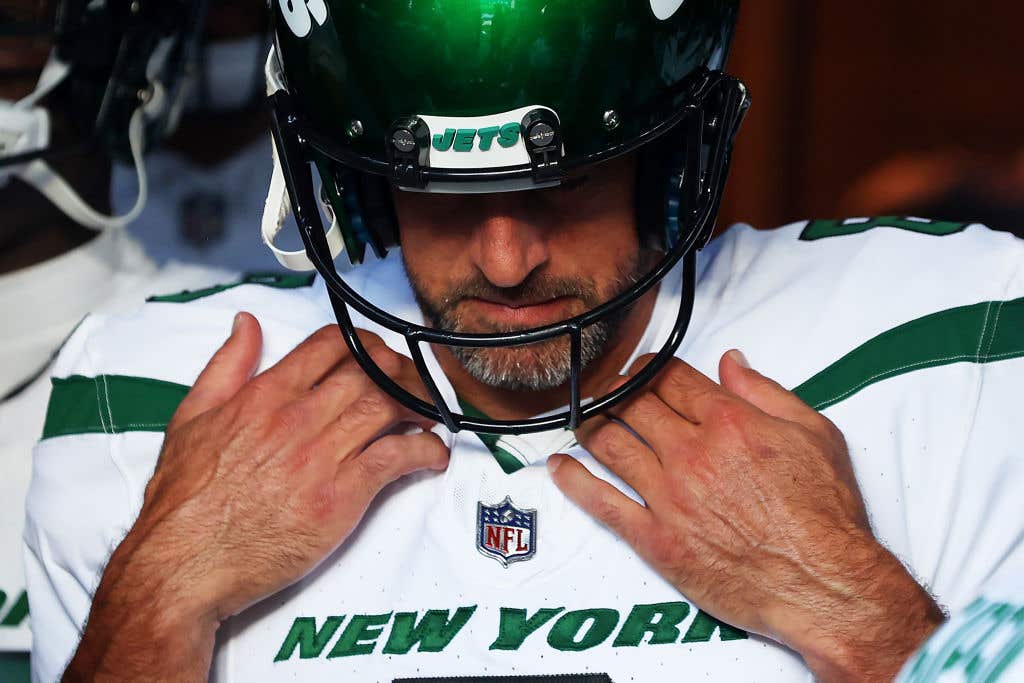
Everyone experiences setbacks in life, family issues, job insecurity or personal loss to name a few, but some of us bounce back better than others.
We all know someone who grew up with childhood trauma, in poverty or with an abusive parent, yet they went on to succeed career-wise and personally. What makes some of us better able to adapt and persevere despite these obstacles? Resilience. A fundamental building block toward social and emotional mental health, resilience gives us the skills to cope with adversity and overcome challenges.
But is it something that parents can pass on to their children?
“It is,” confirms Susan Damico, Director of the Center for Resilient Children (DCRC) at Devereux Advanced Behavioral Health. “Parents and all of the important adults in a child’s life need to know that it’s possible and that they are really the most instrumental people to make it happen.”
Devereux Advanced Behavioral Health is one of the largest behavioral healthcare non-profit organizations in the country. Founded in 1912 in Philadelphia, it now serves needs in autism care, intellectual and developmental disabilities, child welfare and mental health. Learn more about its programs and services at http://www.devereux.org
DECA’s resilience model defines it as the ability to bounce back from risk and adversity, and it is a key aspect of social and emotional health. How do you instill it in children?
“The resilience framework really teaches us that it’s the most ordinary, everyday moments of the day, between a parent and a child, or a teacher and a child, that are really going to help prepare that child for a lifetime of success.”
In ordinary moments throughout the day parents and teachers pass on the basic social and emotional skills needed for lifelong resilience, the three ‘within-child’ requirements critical to a lifetime of success: healthy attachments and relationships, self-regulation to control their emotions and how to take initiatives in healthy ways to get their needs met.
“It’s not, ‘we need to find time to go teach this skill,’” she reminds us. “It’s when you wake up in the morning as a parent and you greet your child with a hug, looking them in the eye and letting them know you see them and you love them, you care for them and the world is a safe place. That’s how children learn to have healthy relationships.”
“When the daily routine is first we wake up in the morning, then we have breakfast, then we go to childcare, then I spend the day in childcare and then someone safe and consistent picks me up; that’s how a child learns self-regulation. They know the world is a predictable place so they can learn how to control their emotions. These are not special things, these are the most ordinary moments of the day.”
For children exposed to trauma, these skills can make the difference between success or a lifetime of emotional, economic and even physical issues.
Trauma, as defined by the US Substance Abuse and Mental Health Administration as an event, is a series of events, or a set of circumstances an individual perceives as physically or emotionally harmful, that has a lasting adverse effect on the individual's mental, physical, social, emotional, or spiritual well-being.
“Children have always – since the beginning of time - been exposed to trauma and risk and adversity,” she notes, including events such as the death of a close family member or a natural disaster, living in poverty, abuse or neglect, or living with violence in a high crime neighborhood as types of trauma. We now, however, understand the long-term impact these experiences have on a child’s future emotional and social well-being.
“Resilience teaches us that all of us is going to experience some level of risk, adversity or trauma in our lives and some young children are going to experience a lot more than others, unfortunately.”
“The science is very clear now that children who experience these adverse childhood experiences – ACES - are negatively impacted in a myriad of ways. A child who has early childhood trauma or early childhood negative experiences is going to be that ‘challenging child’ in a pre-school classroom, and that’s because they have difficulty regulating their emotions. But we also now know that it impacts other parts of their bodies, their hormonal system, their cognitive system and their linguistic system and their ability to learn. All of that is compromised when a child experiences early childhood trauma.”
So what is the antidote or counter to trauma? Early interventions and the development of self-support systems.
“Think about it as a scale. If a child’s scale is loaded up with risk and adversity on one side, you can imagine the scale tipping in the direction of a more negative life outcome. The child is more vulnerable throughout their life,” she explains. “But think about the other side of the scale. The other side of the scale is what we call protective factors… We load that scale up with things like high-quality teachers who are trained to understand trauma, with social services, with parenting classes, with access to health care.”
“We load that scale up with these protective factors so that we can start to tip the scale toward the more positive or ‘resilient’ outcome.” She brings it back full-circle, “The beauty of protective factors is that some of them are found within young children themselves and they are skills that each one of us can teach throughout the day.”
When should these lessons begin?
“Before the child is born!” she exclaims. “From the moment they know they’re going to bring this child into the world, we want parents to know that they are the most important adult in this child’s life and to start learning and understanding about how they can make sure they’re giving their child a strong social and emotional foundation.”
She promises that it is within any parent’s reach; it is not dependent on money, toys or extra resources, it is how you react to your child, with consistency and assurances that the child’s world is safe that adds the needed protections.
“I think people don’t realize what’s happening in a baby’s brain in those first few years of life. It is really the first five years of life when all that wiring is taking place.”
Additional Reading: Ms. Damico recommends Ordinary Magic: Resilience in Development by Ann S. Masten as a guide to understanding resilience in children and adolescents. She also recommends the work of Dr. Bruce Perry, M.D., Ph.D., for anyone wanting to learn more about trauma and brain development. “He brings brain science and neuroscience and neurobiology into language that those of who are not scientists can understand!”
“When you’re raised in an environment that is nurturing and loving, it gets wired in a way that sets you up for social and emotional health and well-being. If you grow up in an environment that is chaotic and not-safe and violent, your brain gets wired differently, and in a way that makes you more vulnerable.”
Initiative, or problem-solving, comes later, again in ordinary moments.
“If you are a parent and your child is not engaging in play, or not trying to do new things, or not trying to solve problems, sometimes it’s as simple as asking, ‘What might be another way that we could talk about this problem?’ or ‘Maybe we could someone else for help?’”
“You show your child that I can think of different ways to solve a problem. So the child learns that there’s not just one way to do things, we don’t give up and just start yelling or lose our temper.”
Children learn through their parents’ behavior, how they use language to express themselves, how they acknowledge that some problems are hard to solve and how they keep trying. “We don’t give up, we keep talking, we keep thinking, we keep problem solving,” she explains. “When children see those behaviors being demonstrated and being modeled, that’s how they learn them. If they’re not seeing those things, they’re not going to learn them.”But what about parents raised in trauma who never learned these coping skills or never developed resilience, how do they develop these skills for themselves or their children?
“There is always hope for families,” she promises. “We want to support children and get them protective support as early as possible, but it’s never too late. If you‘re that parent who is thinking, ‘I was that child that never got support and now I’m a parent’ – it’s not too late for them either.”
For Ms. Damico and her colleagues, promoting resilience in children, often starts with their adults. “Parents can’t give and teach what they don’t know and what they don’t have.” The Devereux Center for Resilient Children’s offers a free downloadable survey, the ‘Adult Resilience Survey’ which asks the parent or caregiver about the same three protective factors - healthy relationships, self-regulation and initiative. The survey asks these adults to think about their own protective factors, to think about their own relationships and asks them to reflect on questions like, ‘I have good friends who support me,’ ‘I provide support to others’ and ‘I trust my close friends.”
Caregivers and early-childhood educators are a vital part of the process. They need to understand the protective factors that lead to resilience, especially when parents are struggling to provide an emotionally safe home environment.
“It is parents and early childhood educators together, working in partnership that can help those most at-risk children. When that child walks in the door each morning, you have the power to make that child feel safe, to feel loved, to feel valued and to feel seen, and that’s what children need. If they’re not getting it at home, we need to make sure they’re getting it at the childcare center.”
Where can parents and caregivers get more information about developing these balancing protective factors? Ms. Damico offers a free resource offered by Devereux. “We have a wonderful website at www.Centerforresilientchildren.org where we offer a tremendous amount of free information about what resilience is and how you promote it through this ‘ordinary magic,’ the most ordinary moments of the day.”
Educators and childcare professionals can purchase the Deveraux Early Childhood Assessment Program. Used in thousands of facilities across the country, the Assessment breaks down the three within-child protective factors into age-appropriate benchmarks of behavior. Parents and teachers can reflect on behaviors specific to healthy attachments, self-regulation and initiative, and then work together to build strategies within the childcare and home setting. Learn more at www.Centerforresilientchildren.org.
Everyone, even strangers, can have an impact on building resilience in children and parents. Ms. Damico encourages everyone to take the Devereux D.A.N.C.E.R. Pledge.
The Pledge was inspired by a 60 Minutes interview by Oprah Winfrey with Dr. Bruce Perry, discussing the effects of Adverse Childhood Experiences, an interview Ms. Winfrey herself later described as one of the most important in her career, opening her eyes to effects of trauma throughout life.
Ms. Damico remembers the interview well. “She said, ‘every time now I think about a co-worker who may be responding in a way I don’t understand or a driver on the road that acted so impulsively, I think, ‘what happened to that person?,” not, ‘what’s wrong with that person, to make them behave in that negative way?’”
“Oprah’s interview was so powerful because she and Dr. Perry brought the complex, sort-of brain science into a conversation that each and every one of us can understand.”
The Devereux Center for Resilient Children created a campaign to encourage people to watch the interview and learn about resilience. “We called it the DANCER campaign because during the interview Oprah Winfrey said, ‘I am so excited about what I have learned about adverse childhood experiences and resilience and feelings that I could dance on the tabletop.’”
The free D.A.N.C.E.R. pledge is available by download at www.Centerforresilientchildren.org .
Ms. Damico breaks down the acronym, ‘D’ is to develop your own understanding of trauma, ‘A’ to advocate for organizations to be more trauma-informed, ‘N’ stands for nurturing yourself to better be able to care for others, ‘C’ to connect and learn at theacesconnection.com, ‘E’ is enjoy and celebrate your feelings and ‘R is to remember that relationships are key to resilience, to make sure that the children in your life feel loved, valued, heard, and seen each day remember.”
“To be a DANCER doesn’t cost you a dime, it just takes some time to be reflective, to take a little more time to be more knowledgeable about this subject, and take time to care for yourself. What we have, we can give, and if we’re the adults in a child’s life and we don’t take care of ourselves, and we don’t have patience and love and kindness, it’s hard to give those things.”
“I really hope that more people will learn about our campaign, and take this pledge, and get informed about resilience and the hopeful message of healing,” she concludes.
“Because we can tip the scale, each and every one of us has the opportunity to tip the scale in the life of a child. And for those of us whose children are older, or if we don’t work day to day with children, you know we can still tip the scales of people and loved ones in our lives, and our colleagues, by being kind and showing gratitude, and every moment of our day is an opportunity to help tip someone’s scale.”
Lora Lewis is a multi-platform content creator who covers a wide variety of topics and loves the art of conversation.





